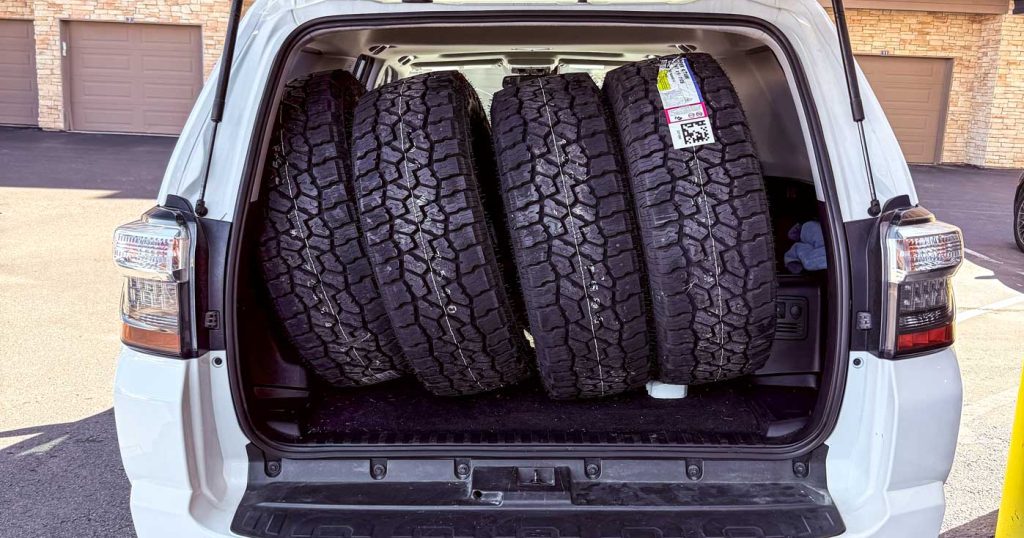I've spent countless hours researching and fine-tuning the Suspension on my 5th-generation Toyota 4Runner. As someone relatively new to off-roading (I've mostly stuck to easy and medium-rated trails so far), I wanted to upgrade my 4Runner's ride without diving straight into hardcore rock-crawling gear. In this post, I'll walk through what I learned, the options I considered, and why I ultimately chose a Bilstein 6112 (front) and 5100 (rear) suspension combo. This is a first-hand account of the upgrade process – including the challenges with alignment and control arms – so that other 4Runner enthusiasts (especially newbies) can benefit from my experience.
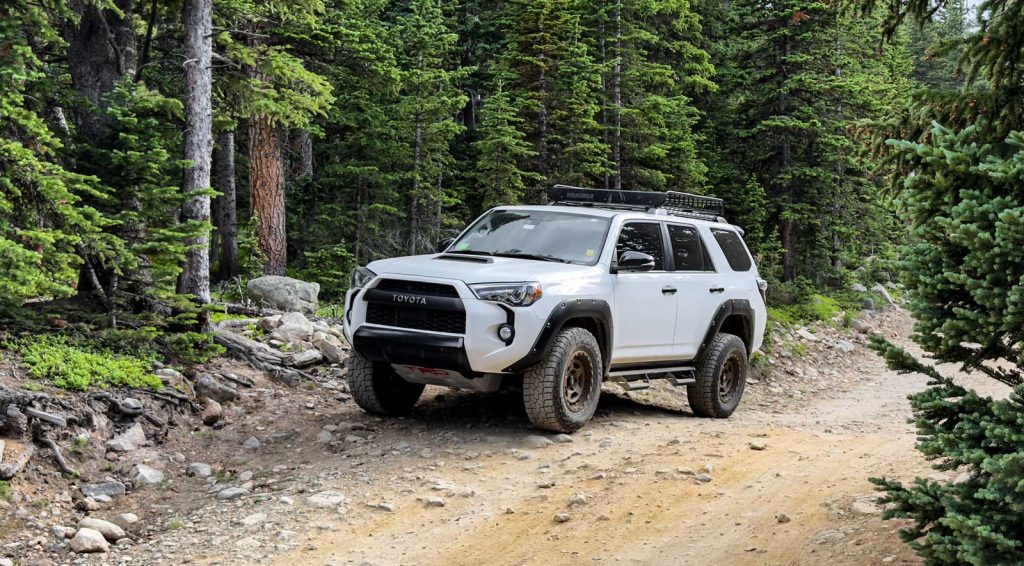
Why Upgrade Your 4Runner's Suspension?
Straight from the factory, the 5th Gen 4Runner has a very soft suspension tuning. This softness is great for absorbing bumps off-road at slow speeds, but on pavement, it leads to noticeable body roll and nose dive. For example, sudden braking causes the front end to dip dramatically, and sharp corners or quick lane changes can feel like steering a boat due to the lean body. Toyota intentionally gave the 4Runner a plush, “Cadillac-like” ride to absorb bumps, but the trade-off is a clumsy feel on the road with less composure at higher speeds. I found this out the first time I had to brake hard on the highway – the nose dive made me feel like the truck was not very safe.
Off-road, the stock suspension's softness helps with comfort on mild trails, but the limited travel and low factory ride height become apparent even on beginner terrain. I remember scraping the skid plates on small obstacles that a lightly lifted truck would clear easily. I'm not alone in that experience – other 4Runner owners have noted that the stock ride height feels “too low…even on beginner trails,” leading to bottoming out or dragging on surprisingly small rocks. For a newcomer to off-roading, those bangs and scrapes can shake your confidence. That was a significant motivation for me: to increase ground clearance by about 2 inches and get a suspension that could better handle dips and ruts without drama.

Finally, there's the matter of vehicle handling and safety. In stock form, the 4Runner's substantial body roll and nose dive can make emergency maneuvers nerve-wracking. Reducing those tendencies would mean a more stable and controlled ride on the road (which is where I, like most owners, spend 90%+ of my miles). With these goals in mind – improved on-road handling, reduced body motion, a slight lift for off-road clearance, and a more confident feel – I began researching the best suspension upgrades.
Diving into Research: Options from Budget to Premium
I soon learned that there's a huge range of suspension options available for the 5th Gen 4Runner. I combed through forums, YouTube reviews, and articles to understand the differences. Broadly, here are the categories of upgrades I encountered:
- Budget Boosts & Spring Kits: These include simple spacer lifts or basic spring and shock replacements, such as the Old Man Emu (OME) kits. OME is known for durability and makes affordable springs and Nitrocharger shocks. Many overlanders use OME for a moderate lift, although some say it can ride a bit stiff if no additional weight is added (such as bumpers, winch, etc.). Still, it's a popular choice for a rugged, set-and-forget suspension upgrade on a budget.
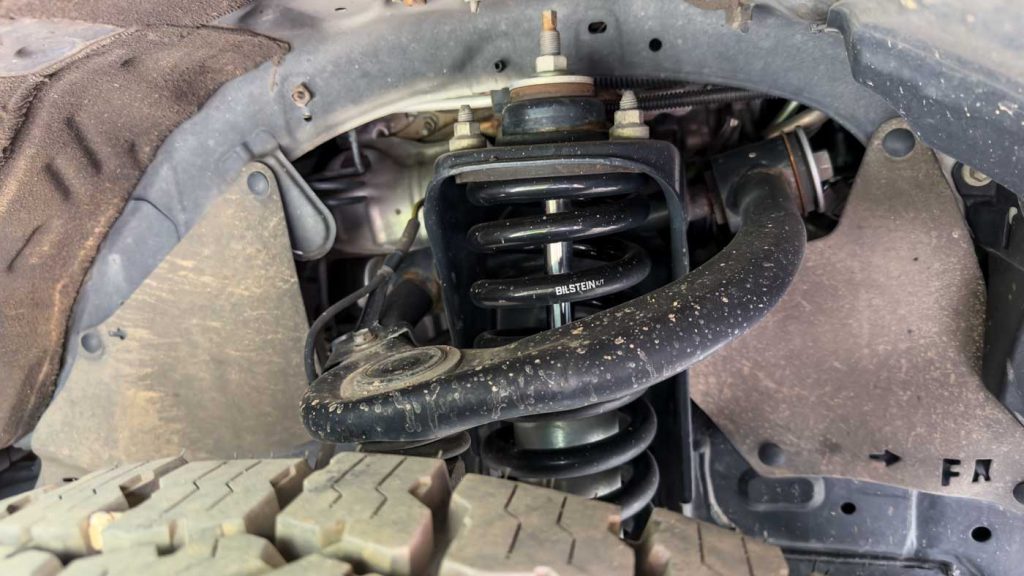
- Mid-Range Shock Upgrades: This is where Bilstein and Eibach come in. Bilstein's 5100 and 6112 series shocks are often cited as the best value for the money for 4Runners, offering a significant improvement in ride quality and handling without a high price tag. Eibach has a Pro-Truck lift kit in a similar price bracket. These options typically reuse or mildly upgrade the springs and focus on better shock damping (often digressive valving that is firm on-road but still capable off-road). After reading dozens of reviews, I found that the Bilstein 6112/5100 combination is regarded as an ideal “introductory” lift – one source even noted it maintains much of the factory comfort while cutting body roll and brake dive roughly in half. That sounded perfect for my needs.
- High-End Coilovers (Premium Kits): At the top end are kits from King, Fox, and Icon, which often use 2.5″ diameter shocks, remote reservoirs, and adjustable damping. According to my research, King Suspensions consistently emerged as a gold standard for off-road performance – “King is among the best,” as one experienced forum member aptly put it. King, Fox, and Icon all have their pros and cons (e.g., Icons typically use digressive valving, while Fox and King employ more linear or progressive setups). These systems excel in extreme use scenarios, such as high-speed desert running, heavy overlanding loads, or frequent use on challenging trails. However, they are expensive (often costing several thousand for a full setup) and sometimes require more maintenance (rebuilding shocks periodically). Since my 4Runner is a daily driver and I'm not tackling the Rubicon Trail every weekend, I decided that a premium coilover kit was overkill for my needs.
After weighing all these options, I leaned heavily toward the Bilstein setup as the best balance. It was reassuring that Toyota itself trusted Bilstein shocks on the earlier 4Runner TRD Pro models (2015-2018) before switching to Fox. In countless forum threads, 5th Gen owners who installed Bilstein 5100 or 6112 kits reported exactly the improvements I was looking for: a firmer, more planted ride with much less nose-dive and wallow. For example, one detailed review noted “much less nose diving when braking, [and] body roll is significantly reduced,” making the 4Runner feel more reactive and composed. That sounded incredible compared to the stock feel. I pulled the trigger on a set of 6112 coilovers for the front and 5100 shocks for the rear, along with the corresponding springs, to achieve a total lift of approximately 2 inches.
My Suspension Choice: Bilstein 6112 (Front) + 5100 (Rear)
The Bilstein 6112/5100 combo I chose is often regarded as the “best bang for your buck” suspension upgrade for 5th-generation 4Runners. Here's why it stood out in my research and now in practice:
- Adjustable Front Lift: The 6112 front coilovers feature snap-ring grooves that allow for adjustment of the front ride height from 0 to ~2.5 inches of lift. I set mine to about a 2″ lift. This leveled out the 4Runner's factory nose-down rake and provided clearance for larger tires without going so high as to cause excessive CV axle angles or other issues. After installation, the truck sits almost level – my front end is about 0.5″ lower than the rear, which is barely noticeable. I'm happy with that stance, as a slight rake means the 4Runner looks level when loaded with gear.
- Improved Damping and Control: The Bilsteins utilize a digressive valving design, which means they firm up at low piston speeds (controlling body motions on pavement) but can still absorb significant impacts off-road. The result is a night-and-day difference in handling. After the swap, the first thing I noticed was how tight and planted the 4Runner felt. The “loose” body sway was dramatically reduced – it honestly felt like a different vehicle in corners and during braking. One write-up quantified it well: if the stock body roll/nose-dive was a 10 out of 10 in severity, the 6112/5100 setup brings it down to about a 5 out of 10. In my seat-of-the-pants judgment, it did cut those motions roughly in half. Driving on curvy roads is much more confidence-inspiring now – the 4Runner stays flatter through turns, and sudden stops don't make the front end dive to the pavement. Even strong crosswinds on the highway affect it less than before since the vehicle isn't as soft and tipsy.
- Ride Comfort: A big concern of mine was maintaining daily drivability. I didn't want a super stiff ride that would beat me up on Denver's pothole-ridden streets. Thankfully, the Bilstein kit manages to firm up the handling without making the ride harsh. It has a balanced feel – “more compliant and precise” is how one fellow 4Runner owner described it, noting that small bumps are felt a bit more, but overall, it's still smooth. I agree with that assessment. The 4Runner now feels like an SUV that's meant to handle some weight and corners (versus the willowy stock “boat” feel), yet it's not punishing over rough pavement. I'd compare it to a European SUV feel – taut but refined. In fact, on gentle highway undulations or gravel roads, the truck feels extremely composed; I can cruise at speed, and the Suspension keeps the 4Runner stable and settled. Only on sharp, small bumps do you notice a bit more firmness, which is a small price to pay for the huge gain in control.
- Proven Off-Road Capability: While my off-road adventures have so far been limited to moderate trails, I wanted a setup that could handle more challenging terrain as my skills (and courage) grow. The 6112/5100 combo is widely regarded as a capable light off-road or “overland” Suspension. It's similar in design to the off-road-oriented 4Runner TRD Pro used in previous years, allowing it to tackle rough roads. The kit also yields a bit of extra suspension travel over stock – approximately 1 inch more in the rear, as the Bilstein 5100 shocks are slightly longer than the factory ones. In the front, the Bilstein 6112 struts can also allow for more downward travel, but (as I'll discuss later) you don't fully realize that benefit without upgrading the lower control arms. Even without that extra inch of droop, I immediately noticed on a couple of rutted trails that the 4Runner keeps its tires on the ground better than before. One review mentioned that obstacles that used to lift a tire in the air were no longer doing so after installing these shocks – I've observed the same thing on cross-axle bumps, especially thanks to the more flexible rear end. Better traction and fewer scary three-wheeled moments are the result.
Overall, the Bilstein setup hit the sweet spot for me: a dramatically improved on-road ride, a moderate lift, and solid off-road performance – all without spending a fortune. I'll admit I was tempted by the allure of King coilovers (my research initially had me convinced King was “the best” out there), but I'm glad I trusted the data and real-owner feedback. Unless you're building an extreme off-road rig, the 6112/5100 offers phenomenal performance for the price.
Installation Experience: From Wrenching to Alignment
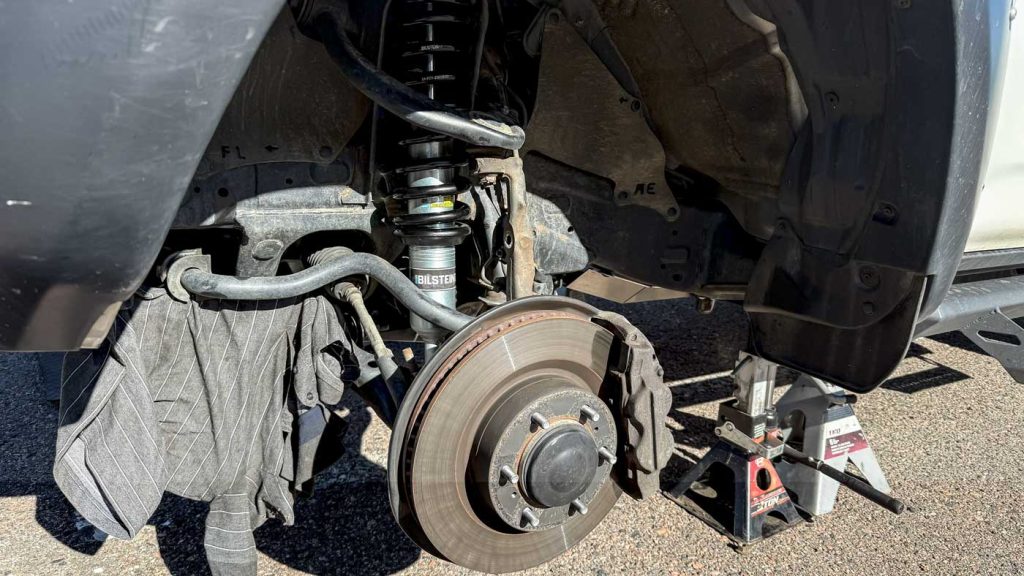
Once I had all the parts in hand, I decided to have a trusted local 4×4 shop do the installation. The front 6112 coilovers require compressing the springs and a bit of wrestling to get them in place (the front Suspension is a double-wishbone design that can be tricky to disassemble). The rear 5100 shocks are much simpler (just two bolts each), but I also installed new rear springs for the lift, which meant dropping the rear axle a bit. All told, the shop completed the job in about 4 hours of labor, and I was able to drive home on the new Suspension the same day.
Before driving too much, I knew an alignment was critical. Whenever you adjust the suspension ride height, you'll alter your alignment settings (camber, caster, and toe). I immediately took the 4Runner in for a professional alignment, and this is where I encountered a couple of surprises worth sharing.
The Lower Control Arms (LCAs) Dilemma
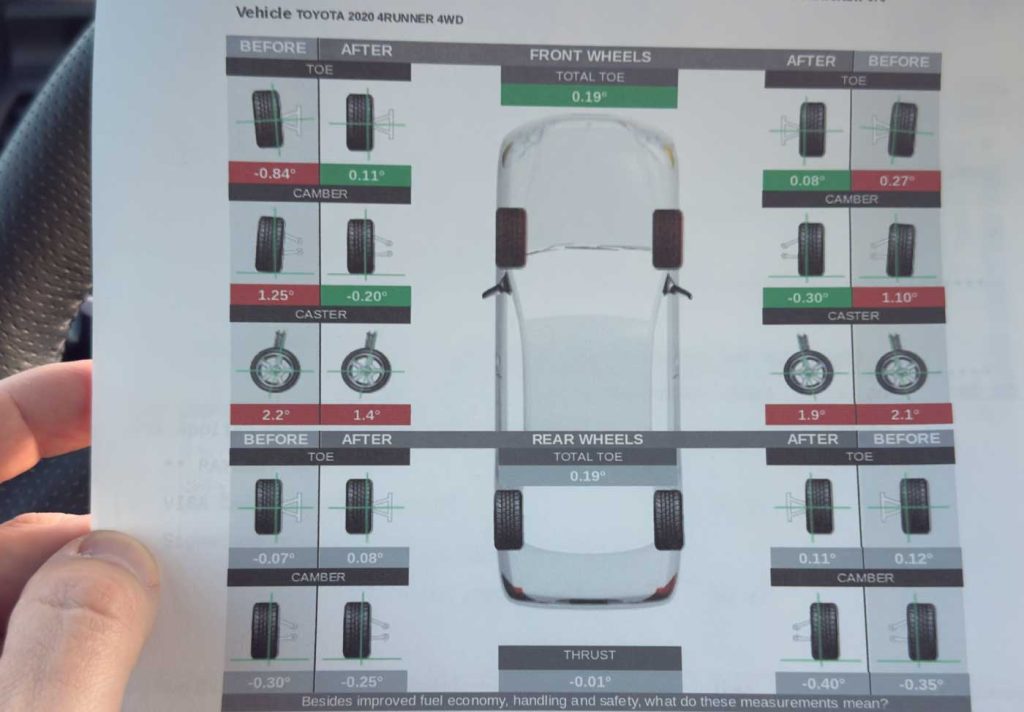
From my research, I was aware that lifting the front by ~2 inches on stock lower control arms can push the limits of alignment adjustability. The 4Runner's factory LCAs are fine at stock height, but when you lift the front, the suspension geometry changes – specifically, it becomes hard to dial in sufficient positive caster. Caster is the angle that helps with straight-line stability and return-to-center in your steering. With a 2–3″ lift on stock LCAs, many shops can only achieve around 2°–3° of caster (factory spec is ~3°, with a preference for around 4° on lifted trucks for improved stability).
One forum member noted that with a 1.6″ lift, his caster was maxed out at +3.6°, and at a 2.5″ lift, you might “struggle to get +2.5° of caster with stock LCA's”. Lower caster isn't a death sentence – my alignment came back with roughly +2.5° on each side, and the 4Runner tracks straight – but it's at the low end of acceptable. The steering feels just a touch lighter and less self-centering than before. Another 4Runner owner described himself as very particular and found he “was unable to get a quality alignment until [he] changed control arms,” after which the shop dialed the caster to 4.0° and transformed the steering precision.
The takeaway: If you lift about 2 inches or more, aftermarket LCAs are highly recommended. Aftermarket lower control arms (from companies like SPC, Total Chaos, JBA, etc.) often feature revised geometry (with built-in caster correction) and increased adjustability, allowing the alignment shop to return your specs to the sweet spot.
They also often use a ball joint or uni-ball that allows greater articulation, unlocking the additional droop travel that shocks can provide, as seen in the 6112. In my case, I initially held off on LCAs to save costs, but I plan to add them soon. They will not only perfect the alignment (bringing the caster up to ~4° for a more “planted” highway feel) but also provide me with the last bit of suspension travel and strength for off-road use. If you're planning a similar setup or budget for ULCAs – you might be okay without them for a mild lift, but “okay” likely means slightly compromised alignment and a limit on performance.
Seized Bolts and Lower Control Arms (LCA)
The second surprise came during the alignment itself. The technician called me out to the shop floor to show me something: the adjustment cams on my lower control arms were completely frozen in place. These cam bolts are used to adjust the camber and caster on the front Suspension by pivoting the LCAs in or out. On many Toyota 4x4s (such as 4Runners and Tacomas), these bolts tend to seize inside the LCA bushings over time, especially when exposed to road salt and rust. In my 4Runner's case (an 5-year-old vehicle with plenty of winter driving), it was no wonder that the bolts were seized and that the shop could not adjust the caster or camber at all on one side. Since the picture below shows my alignment at that moment, you can clearly tell that I couldn't drive on that for long, had to order new lower control arms.
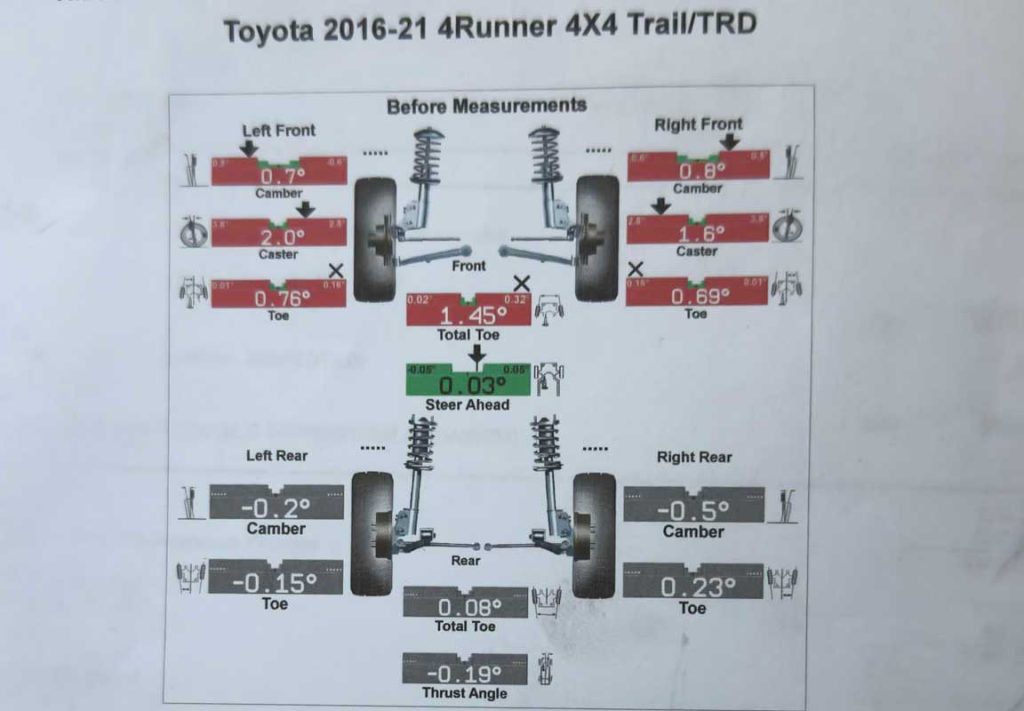
This is a fairly common issue – one forum post noted that the 5th-gen 4Runner's alignment bolts can corrode and seize, even within the first year, in harsh climates. The unfortunate solution, when this happens, is cutting out the bolts and replacing the lower control arms (since the bolt is welded to the bushing sleeve at that point). Faced with this news, I decided to turn a setback into an opportunity for improvement. Instead of installing Toyota stock LCAs again, I went with the SuperPro aftermarket lower control arm kit.
The SuperPro LCAs are a hidden gem. They're designed to “overcome the repair problems associated with seized lower inner camber bolts, worn ball joints and bushes,” and they come with all-new hardware. Essentially, it's a complete LCA replacement with high-quality polyurethane bushings, upgraded ball joints, and offset bushings that provide extra caster. This is ideal for a lifted vehicle – the arms add about +2° of caster over stock, which helps alignment even if you still have stock LCAs. With fresh cam bolts and grease in the new bushings, future alignments should be hassle-free. I had the shop install the SuperPro arms (which added to the labor, but it was worth it), and the alignment was completed successfully.
It's been ~20,000 miles since those LCAs went in, and I've had zero issues – no clunks, and tire wear is even. If you're lifting an older 4Runner, I'd strongly suggest checking those lower cam bolts beforehand. Spray them with penetrating oil days in advance and pray they move. However, be mentally (and financially) prepared to cut them out and replace them. It's one of those “might as well” projects: you might as well replace with better arms if you're in there, rather than fighting old rusty parts. I'm extremely happy with the SuperPro solution on my rig.
Driving Impressions: Transformation Achieved
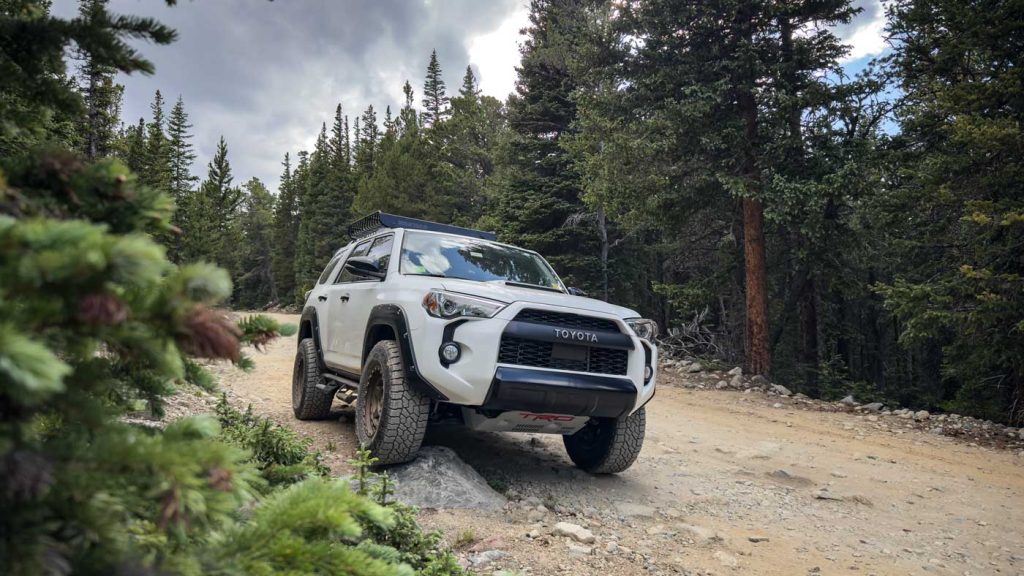
The true payoff for all this work (and research) is how the 4Runner now drives and performs both on the road and on the trails I started frequenting with more confidence. I'll say it plainly: the difference is massive. It's not an exaggeration that the truck feels “drastically transformed” in everyday driving. The unbearable body roll is now gone. Changing of lanes or taking a freeway on-ramp now feels composed and confidence-inspiring. The brake dive that used to annoy me in stop-and-go traffic has largely vanished; the nose still dips a bit under very hard braking (physics is physics), but it's a more controlled motion and doesn't unsettle the vehicle. I even tested the infamous freeway off-ramp bump that used to make the whole 4Runner shudder – with the Bilsteins, it just absorbs it with a muted “thump” and stays on course.
The whole vehicle's demeanor is, in a word, composed, and I might go as far as say that I feel safer driving it since it is more predictable now. While off-roading, the softness of the stock suspension was definitely not missed. I recall that the softness made the truck rock a lot more. I don't go on technical trails, but for where I do go to, this set up is perfect.
Along with the handling improvements, the visual change is striking. The roughly two-inch lift, combined with the more substantial tires I'll mention below, gave the 4Runner a much more aggressive, off-road-ready look. Instead of the factory nose-down stance and relatively small tire gap, it now stands proud, with a level posture and ample clearance in the wheel wells. I've had fellow 4×4 enthusiasts comment that it looks “just right” – not overdone, but not stock. If being completely honest, the Driver Soul's 4Runner gets more compliments than the BMW M4, wherever we go in Colorado.
Off-Road Performance on Moderate Trails
As a confessed newbie to off-roading, I haven't done anything too extreme yet – mostly forest roads, some muddy trails, and rocky passes rated easy to moderate. On these trails, the suspension upgrade shines in terms of comfort and capability. Where the stock suspension bottoms out or seesaws over bumps, the Bilsteins now soak up dips with ease. The extra travel and firmer damping prevent the Suspension from crashing or hitting the bump stops as readily. Even without fancy remote reservoirs, I've found that even a long washboard road doesn't fade the Bilsteins – they stay cool and consistent, keeping the ride relatively smooth and the tires tracking the ground.
I also appreciate the greater articulation I'm getting (especially in the rear). I recently traversed a ditch diagonally, a spot where I recall lifting a rear wheel in the past. This time, all four tires stayed planted and churned forward with traction. The added flex (about an inch more droop in the back) allowed the tire to maintain contact. It's a subtle thing, but it increases confidence knowing that the 4Runner is less likely to teeter or lose grip unexpectedly on uneven terrain. For someone still building off-road driving skills, that confidence is huge.
On the road to one of my favorite trailheads, there's a set of winding mountain switchbacks. Driving up those after the suspension install was a joy – I could carry a bit more speed through the turns without the 4Runner feeling unsettled. And coming back down, the reduced nose-dive made downhill braking much more controlled. It's like the best of both worlds: a truck that rides smoother off-road and handles better on-road. I no longer feel the need to apologize for the 4Runner's road manners when I give friends a ride – it feels sorted out.
The Tire Upgrade Post Suspension Upgrade: Falken Wildpeak A/T vs. Street Tires
It would be impossible to discuss my 4Runner's transformation without mentioning its tires. After lifting the truck ~2 inches, I decided to replace the stock-oriented Michelin Defender LTX M/S tires (which are essentially highway all-season tires) with a set of Falken Wildpeak A/T4W all-terrain tires. The difference was immediate and impressive. The Suspension and tire upgrade together have significantly improved the 4Runner's driving performance, making it better than it was with the stock suspension and street tires.

The Michelin LTX tires were great for road comfort and long tread life, but they lack the tread and sidewall strength necessary for serious off-road use. The Falken Wildpeak A/T, on the other hand, is a true all-terrain tire featuring an aggressive tread pattern, 3-ply sidewalls, and a mountain snowflake rating for enhanced winter traction. In everyday driving, I noticed more road noise (the Falkens hum just a little on the highway, whereas the Michelins were nearly silent) and a slight decrease in MPG. However, they are still very civil on the road – nothing obnoxious in terms of noise. And importantly, they balance out nicely and don't cause any vibration.
Off-road, the Wildpeaks are a revelation. On a particularly muddy trail where I'd previously slipped, the Falkens clawed through with ease. In loose gravel and sand, they provide much better grip than the street-biased Defenders ever did. Other 4Runner owners have debated these two tires, generally concluding that while the Michelins may ride quieter and last a bit longer, the Falkens offer superior winter and off-road performance. I have to agree. One forum member summarized that the Falkens should be better in snow and rough terrain, whereas the Defenders would likely deliver better mileage and less noise on the pavement. Since I live in Colorado (snowy winters) and go off-road whenever I can, the Wildpeaks are the right choice for me.
Combined with the new Suspension, the tires have completed the transformation of the 4Runner. I went from a fairly capable stock SUV, which was lumbering, to a truck that looks the part and drives with much more purpose. I have the ground clearance to get over obstacles that used to scrape, the suspension control to handle bumps and corners confidently, and the tire traction to explore trails without worrying about every little rock or mud patch. If you are curious to learn why I chose the Falken Wildpeak AT4Ws as the best tires for the 4Runner, I have covered it in one of the previous articles as well.
Final Thoughts
Upgrading the Suspension on my 5th Gen 4Runner has been a journey – one that started with reading over others' experiences, asking questions in FB groups, and ended with me hiring mechanics to turn some wrenches for me on my truck. For anyone in a similar situation, especially those new to off-roading, I hope my experience provides a useful roadmap. The Bilstein 6112/5100 combo proved to be an outstanding choice, delivering a significant improvement in driving dynamics without a substantial impact on my wallet. It strikes a balance that's perfect for a daily-driven 4Runner that sees weekend adventure duty. The reduction in body roll and nose-dive is frankly amazing – the first time I took a fast corner after the installation, I couldn't help but grin at how much flatter the truck stayed. And when I catch a glimpse of my 4Runner in a storefront window, I appreciate the tougher, lifted stance it now has.
Of course, no upgrade is without its complications. I learned the hard way about alignment challenges and the necessity of knowing the condition of the lower control arms to get everything back in spec. I also encountered the dreaded seized LCA bolts, an issue that many Toyota owners will face as their vehicles age. My advice is to plan for these: consider upgrading your LCAs when you lift (for both alignment and longevity benefits), and keep an eye on those cam bolts (maybe have new hardware on hand or be ready to replace arms if needed). The upside is that addressing those areas leads to an even more robust and dialed-in setup.
Ultimately, I'm thoroughly satisfied with how my suspension upgrade turned out. The 4Runner now drives how I always thought it should. It's more precise on the street, more capable on the trail, and overall more fun to use in any scenario. I feel confident tackling tougher trails as my skills improve, and I no longer cringe as the 4Runner leans and wallows on mountain roads. For me, that's a huge win. If you're considering a similar path, do your research (there's tons of information available), but don't be intimidated – many others have undergone these modifications and shared their lessons. Hopefully, my story adds to that knowledge base. Good luck with your build, and we look forward to seeing you on the trails.

